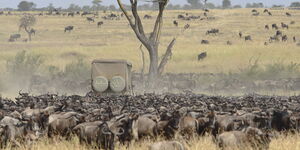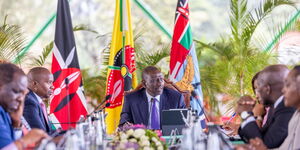Kenya has not signed any agreement with India to facilitate the transfer of cheetahs, the government clarified on Thursday, August 8, dispelling recent speculation that a deal was imminent.
The revelation comes after reports in May suggested the two countries were on the brink of finalising an accord, sparking widespread interest.
During a session in the Rajya Sabha, Union Minister of State for Environment Kirti Vardhan Singh categorically denied that any formal arrangement had been established with Kenya. “No, Sir. No agreement has been signed with the government of Kenya for the translocation of cheetahs to India,” he stated in response to a query.
The speculation began after a high-profile visit by a Kenyan delegation to India in early May, during which they were briefed on India’s ambitious Project Cheetah. This initiative aims to reintroduce the species to the country after it became extinct in the wild decades ago.
The delegation reportedly presented a draft Memorandum of Understanding (MoU) to the National Tiger Conservation Authority (NTCA), which outlined potential areas of cooperation, including wildlife conservation, capacity building, and knowledge sharing.
However, the government’s latest statement suggests that these discussions have not yet materialised into a formal agreement.
“There is no official MoU in place,” an unnamed source close to the negotiations said, adding that talks were ongoing but no timeline had been set for their conclusion.
India’s Project Cheetah has garnered significant attention since its inception, particularly after the successful introduction of 20 cheetahs from Namibia and South Africa over the past two years.
These efforts have borne fruit, with 17 cubs being born at the Kuno National Park in Madhya Pradesh. The project, however, has faced challenges, including the deaths of seven adult cheetahs in recent months.
Despite these setbacks, officials remain optimistic. "The birth of these cubs is a clear indication that the project is moving in the right direction," stated a senior official involved in the initiative. The government is now focusing on expanding the cheetah population within India, with plans to introduce the species into the Gandhi Sagar Wildlife Sanctuary in Madhya Pradesh by the end of the year.
Further ambitions include establishing a cheetah conservation breeding centre in Gujarat’s Banni grasslands, a proposal that received the green light from the Central Zoo Authority earlier this year.
According to a document released by the Union Environment Ministry, the long-term goal is to create a stable population of 60 to 70 cheetahs across the Kuno-Gandhisagar landscape, an area spanning approximately 9,000 square kilometres.
However, the lack of a formal agreement with Kenya could complicate these plans. The draft MoU proposed by the Kenyan delegation included provisions for India to assist Kenya in acquiring equipment for forest rangers, a move that would bolster field patrolling and wildlife conservation efforts in the country.
Without this collaboration, India’s ability to enhance its own cheetah conservation efforts may be hampered.
Environmentalists have urged both governments to expedite the negotiations, emphasising the importance of international cooperation in wildlife conservation.












